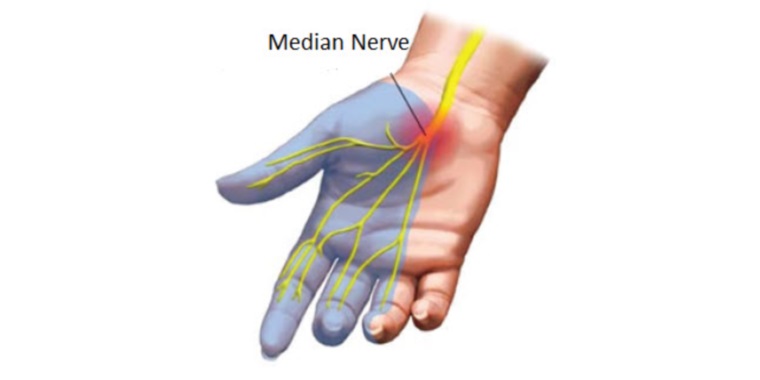Carpal tunnel syndrome (CTS) is the most expensive of all work-related injuries. Over his or her lifetime, a carpal tunnel patient loses about $30,000 in medical bills and time absent from work. The key to treatment for carpal tunnel syndrome is to ensure that you actually HAVE carpal tunnel syndrome. Over the years CTS has taken on multiple meanings to the lay person, from achy wrists to soreness when you type on the computer too long. Unfortunately, medical professionals of all types have begun to use this term interchangeably with many other wrist conditions, leading to incorrect treatment, misdiagnosis and ultimately increased cost from the patient when the treatment doesn't work.
So what exactly is Carpal Tunnel Syndrome? CTS is a compression of the Median nerve as it passes through, you guessed it, the carpal tunnel. The compression of this nerve typically results in numbness of the thumb, index and middle finger of the hand. Weakness of the hand muscles can occur in more severe cases, and pain does not necessarily have to be present at all.
The problem with mis-diagnosing a patient with CTS when they actually have some other wrist problem, is that the treatment can actually make their condition worse. The most common treatment for CTS is a wrist brace and anti-inflammatory medication. But what if you have arthritis (non-rheumatoid) of the wrist? How would a wrist brace help your condition? It wouldn't. Arthritis is a degenerative process of the bone that often presents with achiness in the morning (or changes with the weather) that is relieved by movement. By putting on a brace you have now eliminated movement, cutting off the source of pain RELIEF and eventually causing a deconditioning (weakening) of the wrist and forearm muscles. The arthritis in these patients will also progress significantly faster as well.
So now that your doctor has confirmed that you have an entrapment, pinching, compression, etc. of the median nerve (a.k.a. CTS) they can begin treatment, right? Well, the median nerve technically begins from what is called a "nerve root" in the neck. It then branches off what is called the Brachial Plexus (you don't need to remember that name), which is located near the shoulder. It then travels down the arm, to the elbow, across the forearm and finally through the carpal tunnel. Any pinching of that nerve down the line can give symptoms of wrist pain, numbness and/or muscle weakness. Imagine having a $30,000 carpal tunnel resection(cut open your wrist and slice open the tendon sheath), having it heal into a 1-2 inch scar only to find out that the pain and numbness persists. This, unfortunately, is exactly what happens to some patients.
It is our belief as Chiropractors that an extensive examination of the entire neck, shoulder, elbow and wrist should be performed to determine the source of the problem. It is common for your Chiropractor to find problems in more than one region, which they call "Double Crush" syndrome. Imagine a garden hose that is only pouring out at half pressure due to a "pinch" in the hose, now imagine a second "pinch", which causes the hose to stop pouring water completely. The first "pinch" may not even be noticeable to the patient; however, once the patient causes a second pinch, lets say they went bowling and hurt their elbow, they begin to have CTS symptoms.
Not all CTS patients fall under the above examples, and not all CTS patients actually have CTS. If you have any questions pertaining to your wrist pain please feel free to schedule a free consultation or use the "Ask a Question" button above.


